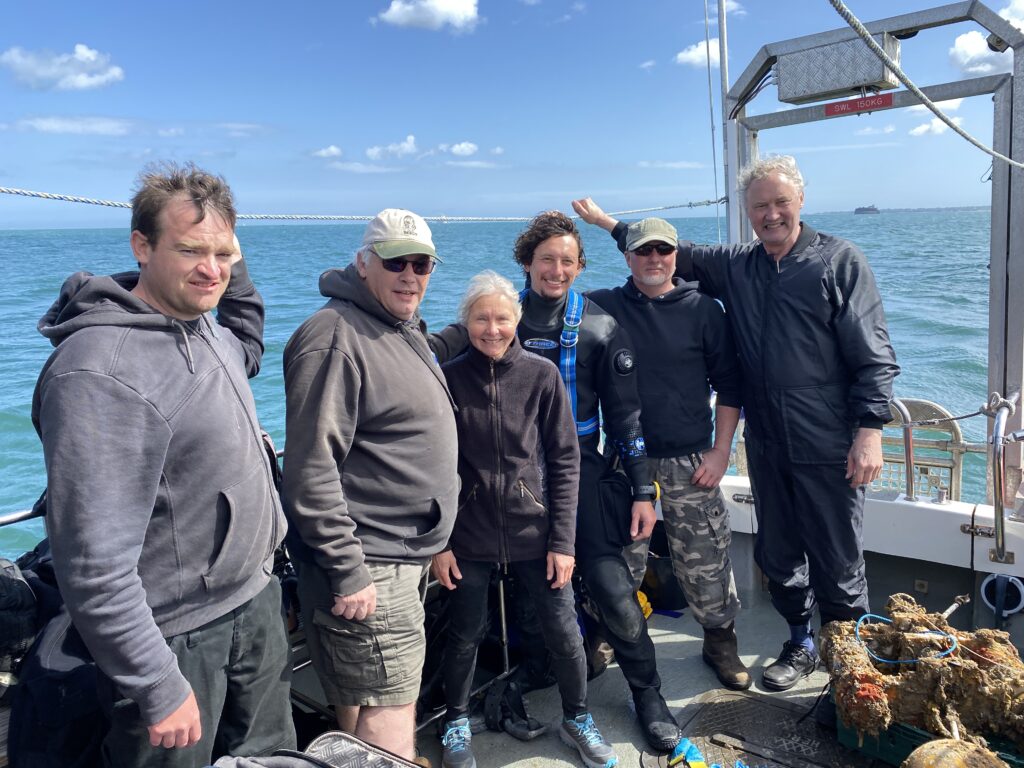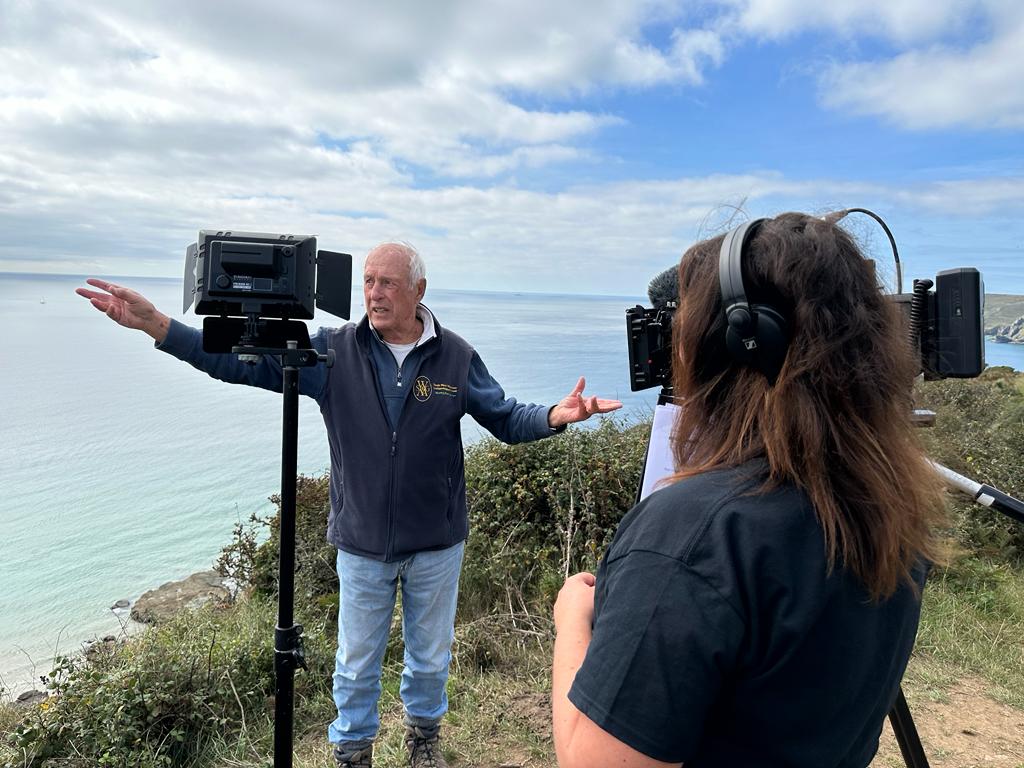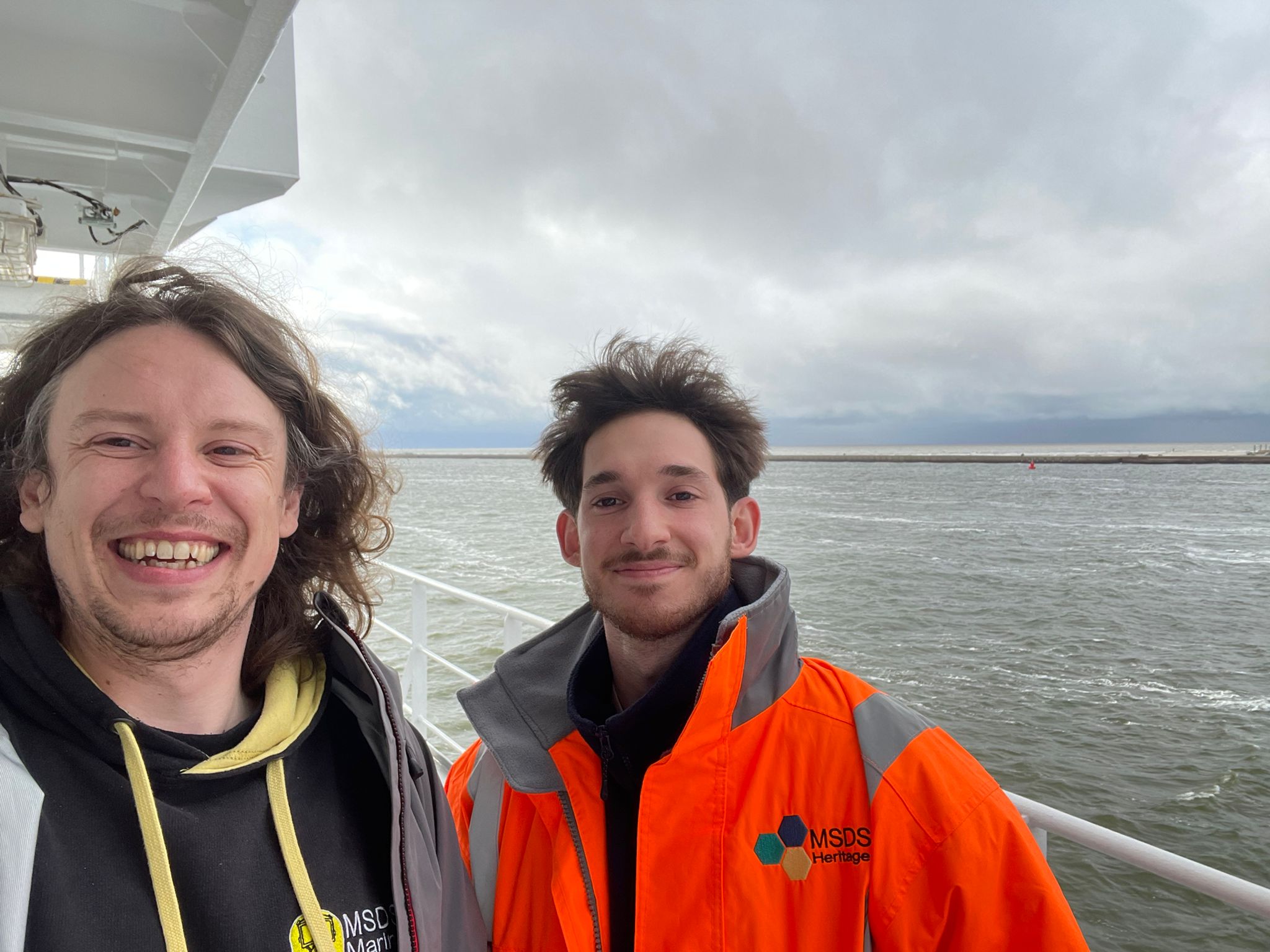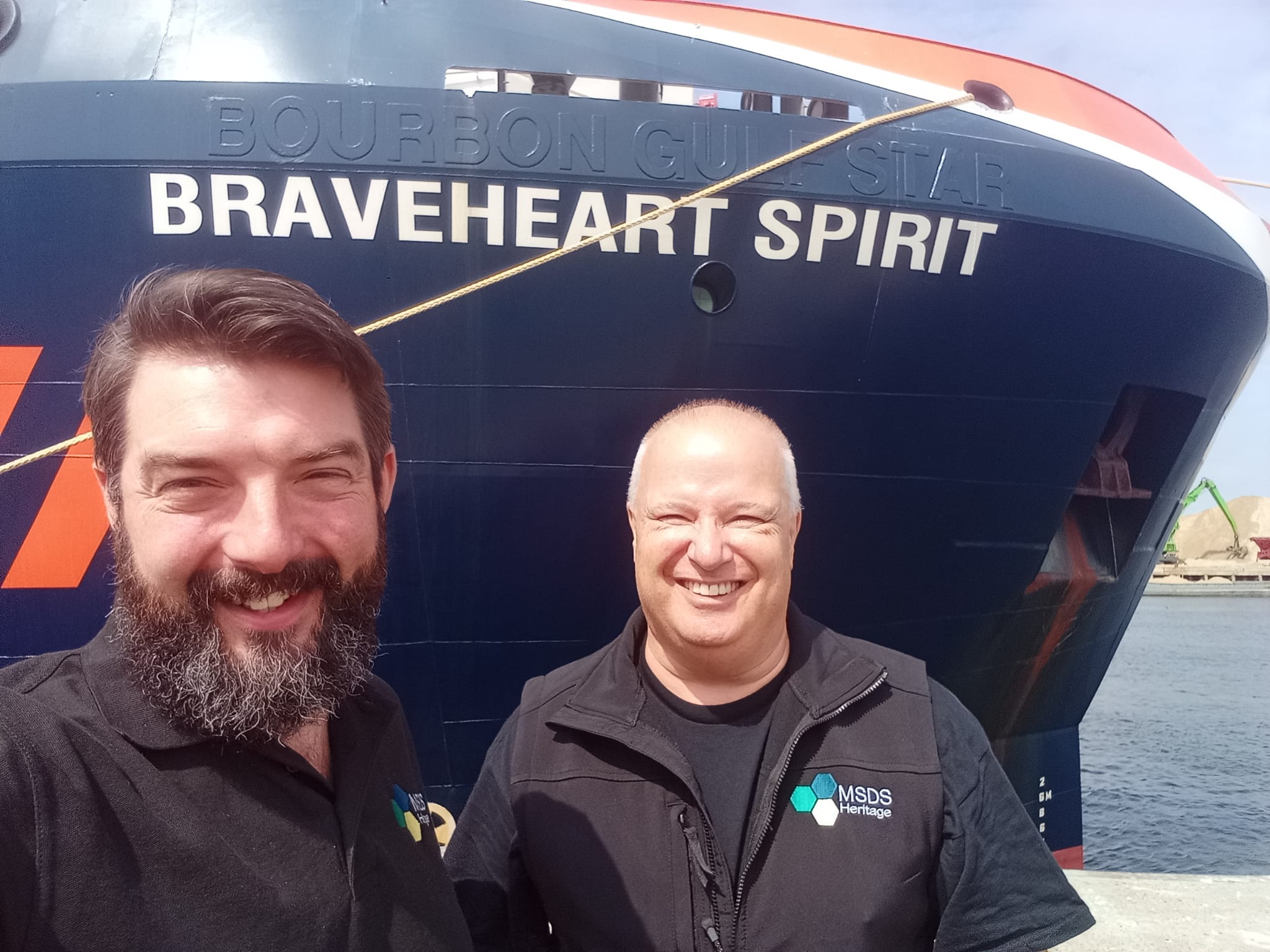In 2021 MSDS Marine awarded two MSDS Marine grant awards to support work on protected wreck sites. Daniel Pascoe from Pascoe Archaeology was one of the recipients. In this blog Daniel explains how he used his award to help diving on the Mary Rose earlier this year.
The MSDS Marine protected wreck grant made a significant contribution to the cost of two days of diving on the Mary Rose site this year. Working from the Diving Support Vessel (DSV), Wight Spirit a new look Mary Rose dive team took the plunge to carry out important monitoring dives. These dives were directed by a recent multi-beam bathymetry survey which identified several seabed anomalies in need of investigation. These anomalies have been exposed due to the site buoy excavating a large hole as its chain rotates in the tide. The bathymetry also located the position of the site’s (lost?) data logger, a scientific instrument used to collect environmental data such as water temperature and salinity. Divers were therefore tasked with locating and recovering the data logger, a general inspection of the site and ground-truthing anomalies within the site buoy hole.
We were lucky to have great conditions above and below the surface which made for a really enjoyable couple of days. The data logger was located almost immediately by diver Mark Hobbs, extending out of the silty seabed, camouflaged in a nest of seaweed and covered in a variety of soft and crusty marine growth. After clearing away some of the growth he successfully undid the shackle that released it to the surface, where it was recovered onto the boat.

Divers Christopher Dobbs, Alex Hildred and Rodrigo Ortiz-Vazquez inspected the northern area of the site where parts of the Mary Rose’s bow still remain buried. They found that there has been a build up of soft silty deposits that are ideal for maintaining the preservation of the structures still buried beneath. Dave Parham and Tom Cousins inspected the area being excavated by the site buoy chain and fortunately did not find any exposed structural remains relating to the Mary Rose, but they did find scatterings of broken pottery, glass and animal bone. Some of it may have been modern or at least post-Tudor, but it was possible some was Tudor and highlights the need to return for a systematic diver survey over the whole area.
The team all look forward to returning to site in the future to keep up with important monitoring tasks.
Thank you, MSDS Marine.





